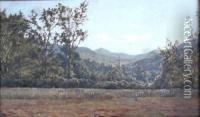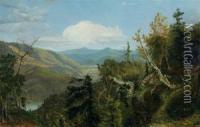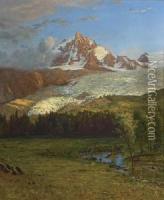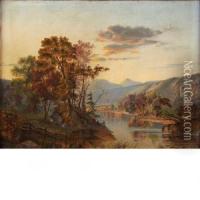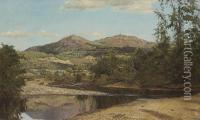Horace Walcott Robbins Paintings
Horace Walcott Robbins was an American artist known for his landscape paintings and etchings that captured the essence of the American and European countryside. Born in 1842, Robbins developed an early interest in art, which was nurtured through his education and travels. His work is characterized by a meticulous attention to detail and a profound appreciation for the natural world, reflecting the influence of the Hudson River School as well as aspects of the emerging Impressionist movement.
Robbins' career spanned a time of significant change in the art world, and he was adept at blending traditional techniques with newer, more experimental approaches. This versatility allowed him to explore a variety of subjects and settings, from the pastoral scenes of New England to the historic landscapes of Europe. Despite the breadth of his travels, Robbins' work consistently exhibited a deep sense of place, capturing the unique atmosphere and mood of each location.
Throughout his career, Robbins participated in numerous exhibitions and was affiliated with several prestigious art institutions. His works were well received by both critics and the public, earning him a respected place among his contemporaries. However, like many artists of his era, Robbins' name became less well-known after his death in 1904, overshadowed by the rapid evolution of art movements in the 20th century.
Today, Robbins' legacy is preserved through his contributions to American art, particularly in his ability to convey the serene beauty of the landscapes he so loved. His paintings and etchings remain in collections and museums, serving as a testament to his skill and vision. They continue to attract admirers for their technical proficiency and the emotional depth with which Robbins imbued his depictions of the natural world.
